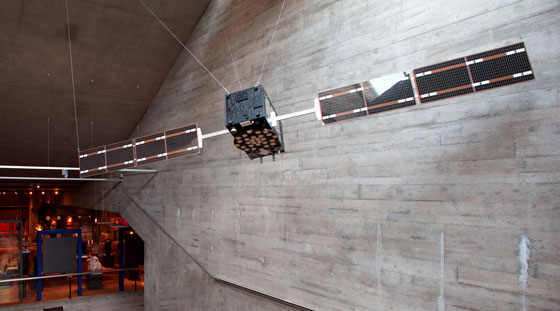
How long does a second last? Who defines what time it is? The quest for a precision, a scholarly affair, has been the driving force behind watch innovations since the 17th century.
Oscillators are at the heart of these developments: the pendulum, the hairspring & balance, and then quartz served to boost clocks’ precision. From WorldWar II onwards, the precise measurement of time passed from the hands of watchmakers and astronomers to those of physicians. As of 1967, the second was no longer defined by astronomical observations, such as the passage of the Sun through the Zenith, but instead by the measurement of a microscopic phenomenon: the oscillation of caesium atoms.
The new exhibition of the Musée international d’horlogerie (MIH) is called A la femtoseconde près! (To the nearest femtosecond). A femtosecond – 1/1,000,000,000,000,000th of a second – corresponds to the infinitesimal inaccuracy of a contemporary atomic clock. The margin of error is about one second every three million years!
The exhibition, on show in the architectural extensions of the MIH represented by the Gallery and the Belfry, approaches the theme of extreme precision from three angles:
- the evolution in the precision of mechanical clocks through electromechanical and quartz clocks to atomic clocks. The exhibition features two definitions of time: astronomical on the one hand – symbolised by the large meridian bezel of the Neuchâtel Observatory – and atomic on the other, symbolised by the Oscillatom caesium clock, developed by Oscilloquartz in Neuchâtel; as well as the break that marks the transition from one to the other.
- the operation of various types of atomic clocks. By focusing on introducing atomic caesium, hydrogen and rubidium clocks from the 1970s to the present day, the exhibition explains – by means of diagrams and dismantled objects – the various components and operating principles of atomic clocks, from telecommunications antennae to satellites.
- the fields of applications for these clocks in daily life and in the realm of scientific research, symbolised by a four-metre-wide model of the Galileo satellite, hanging ten metres from the ground. While the degree of accuracy of atomic clocks (10-15) is imperceptible to the average individual, it has nonetheless become essential to the organisation of human society, since the high performance of geolocalisation, navigation, transport and telecommunications technologies are determined by the extreme precision of the clocks governing them.
To mark the opening of this new exhibition area, the MIH has revamped the welcome it provides for visitors to its main exhibition, who now enjoy commentary from Mr Time himself. In two three-minute segments, this character provides the keys to understanding the history of timekeeping mechanisms, and of atomic clocks in particular.
In addressing such a complex and abstract subject as billionths of a second, the MIH has developed various ways of reaching out to its audiences. Alongside the customary trilingual (French, German, English) texts designed for various reading levels, visitors are also provided with an audio guide in five languages (French, German, English, Italian, Spanish) enabling them to gain an understanding of the complex objects on show using clear, image-rich language.
Youngsters and families are also pampered. Children can slip on a white coat so as to play the role of a physicist and find their way through the exhibition equipped with an entertaining booklet serving as a guide.
June 21, 2018


 News
News